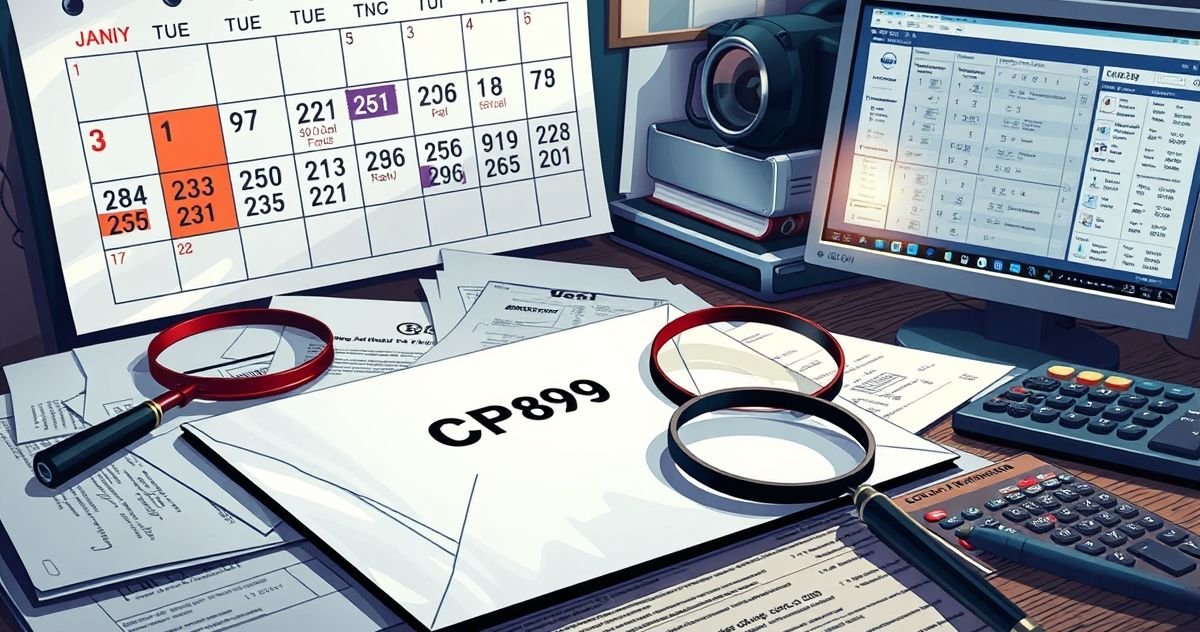CP89AN Notice: Understanding Adjustments to Your IRS Tax Account
The Internal Revenue Service (IRS) issues a variety of notices to inform taxpayers of important updates or required actions on their account. One such notice is the CP89AN Notice, a critical communication that signals substantial changes made to your tax account due to discrepancies found in previously filed tax returns.
What is the CP89AN Notice?
The CP89AN Notice is a formal document sent by the IRS when they have identified significant errors or discrepancies in a taxpayer’s previously submitted returns. This notice serves to inform the taxpayer of these discrepancies and to outline the adjustments made to rectify the situation.
The Primary Purpose of the CP89AN Notice
The main aim of the CP89AN Notice is to ensure accuracy and compliance in tax filings. It serves as a notification that adjustments have been made to your reported income, deductions, or credits. These corrections could arise from mismatches in third-party data, such as W-2s or 1099s, compared to what was reported on the tax return. Its primary purpose is to inform the taxpayer about these adjustments to prevent future errors and ensure the taxpayer is fully aware of any changes to their tax liabilities or refunds.
Key Features and Components of the CP89AN Notice
- Explanation of Adjustments: The notice comprehensively outlines each correction made, citing the specific items adjusted and the reasons for these changes. Adjustments could pertain to income discrepancies, inaccuracies in credits like the Earned Income Tax Credit (EITC), or deduction miscalculations, such as over-claimed charitable contributions.
- Impact on Refunds or Balances: The notice will clearly state whether the changes result in a balance due, a reduction, or an increase in the expected refund amount. If additional tax is owed, the exact amount, along with a due date, will be provided.
- Interest and Penalties: If the adjustments result in an underpayment, the notice informs you about any applicable penalties and interest, including how and when to pay.
Filing and Compliance Requirements
Receiving a CP89AN Notice necessitates prompt action from the taxpayer. Depending on the specifics of the adjustments, taxpayers may need to:
- Review and Verify: Carefully examine the details of the notice to ensure accuracy. If you have records or documentation, verify them against the IRS adjustments.
- Payment Compliance: If there is a balance due, ensure it’s paid by the specified deadline to avoid additional interest or penalties. The IRS offers various payment options, including online payments and installment agreements.
- Dispute Process: If you disagree with the IRS’s findings, the notice provides guidance on how to dispute the assessment. This typically involves submitting further documentation to support your original filings.
- Amended Returns: In some scenarios, you may need to file an amended return if there are additional errors or issues not covered by the adjustments detailed in the notice.
Penalties or Consequences for Non-Compliance
Ignoring or failing to act on a CP89AN Notice can lead to serious repercussions. Unresolved issues could result in increased penalties and interest accrual on any outstanding balance. Moreover, neglecting to address the notice could trigger enforcement actions by the IRS, such as tax liens or levies. In severe cases, it might escalate to an audit of your current and previous tax returns, further complicating your financial standing.
Importance of the CP89AN Notice
Understanding and responding to the CP89AN Notice is crucial for maintaining your tax account’s integrity and ensuring compliance with tax laws. This notice serves as both an alert mechanism and a preventive step in tax resolution processes. By addressing it promptly, taxpayers can:
- Minimize Financial Penalties: Quick action can reduce or avoid additional interest and penalties, thus saving money.
- Prevent Collection Actions: Properly managing any additional amounts due as noted in the notice helps avoid future collection actions by the IRS.
- Facilitate Tax Resolution: The notice can be a starting point for discussing payment plans or other arrangements if financial hardship exists.
- Ensure Accurate Records: Responding to the notice ensures your tax account accurately reflects your legal and financial obligations, thereby preventing further issues.
Ultimately, the CP89AN Notice is a critical tool within the IRS’s suite of compliance mechanisms, ensuring taxpayers are informed and have the opportunity to rectify discrepancies in their accounts. By understanding this notice’s components and implications, taxpayers can maintain better records, align their reported data with IRS findings, and take timely actions to uphold compliance and prevent financial setbacks.



